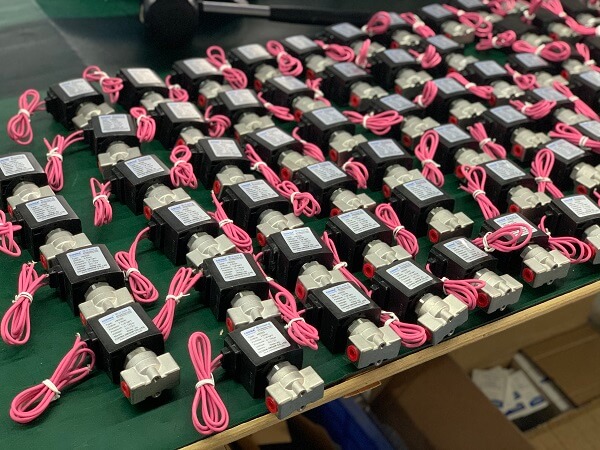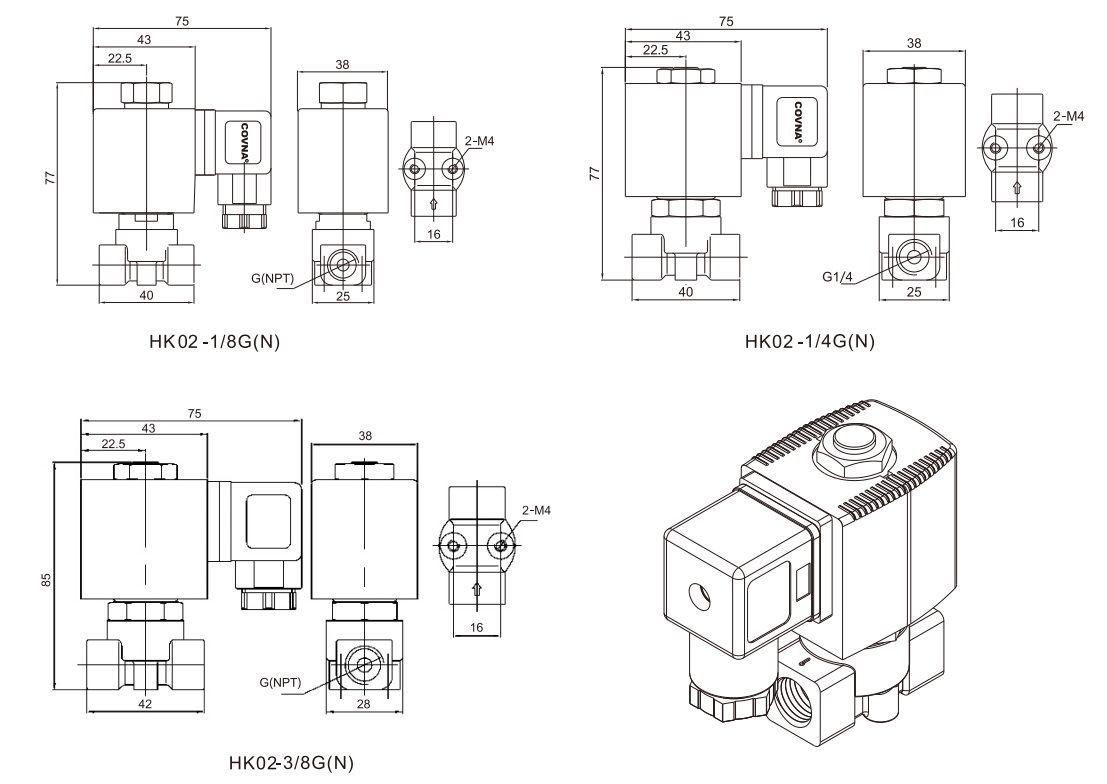





COVNA HK02 Compact Design Solenoid Valve – Brass
COVNA HK02 Brass Solenoid Valve
with compact design. Applied to low pressure system, open from 0 bar. Pressure ranges from 0 to 16 bar. Normally open and normally closed are available. 2 options of materials for choice: Brass and stainless steel. Widely used for ventilator machines and other machines. COVNA produce various solenoid valve in brass, stainless steel and PVC for various application. Consult us to get the best price!
Model
- Function: Normally Closed / Normally Open
- Pressure: 0 to 16 bar
- Voltage: DC-12V, 24V; AC-24V, 120V, 240V/60Hz; 110V, 220V/50Hz
- Temperature of Media: -10 to 180℃ (14℉ to 356℉)
- Suitable Media: Air, water, steam, oil, gas, etc
- Material: Brass

● Compact design for various machines like ventilators, and other small equipment
● Responsive
● Applied to low pressure system, open from 0 bar
● Available in G and NPT threaded
| Port size | 1/8″, 1/4″, 3/8″ | Orifice(mm) | 1.0, 1.6, 2.5, 3.0, 4.0, 5.0, 6.0 |
| Port Thread | NPT, G | Function | Normally Closed / Normally Open |
| Pressure | 0 to 16 bar | Voltage | DC-12V, 24V; AC-24V, 120V, 240V/60Hz; 110V, 220V/50Hz |
| Temperature of Media | -10 to 180℃(14℉ to 356℉) | Suitable Media | Water, Air, Oil, Gas, Fuel, Oxygen, etc |
| Material | Brass or Stainless Steel | Applications | Water treatment, automatic machines, ventilator, etc |

| Port Size | 3/8”~2” | Orifice(mm) | 15, 20, 25, 32, 40, 50 |
| Port Thread | BSPP, BSPT, NPT, FLANGE | Function | Normally closed or opened |
| Pressure | 0-1.0 MPa (10 bar) | Voltage | DC-12V, 24V; AC-24V, 120V, 240V/60Hz; 110V, 220V/50Hz |
| Temperature of media | -10~100℃ (14℉ to 212℉) | Suitable Media | Water, gas, oil, etc |
| Material | Brass, Stainless Steel | Sealing Material | NBR, VITON, PTFE, EPDM |
| Coil | S51B,30VA(AC),24W(DC),IP65,100%ED | ||
| Coil | SD01B,28VA(AC),36W(DC),IP65,100%ED | ||





